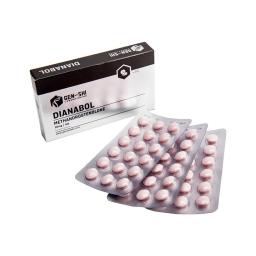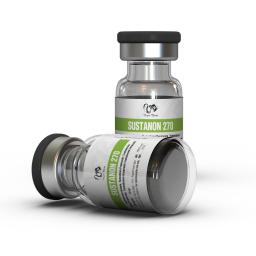In the repertoire of any bodybuilder should be several exercises known as core movements. These movements are most effectively used to directly stimulate all of the major muscle groups, i.e. arms, legs, chest, shoulders, and back, while providing indirect stimulation to the supportive muscle groups at the same time.
Core movements should make up the foundation of any training plan. These exercises, or variations of them, should be the basis on which you develop your daily
workout routine. When used with proper form and appropriate weight, core exercises offer the bodybuilder diverse benefits, such as even or symmetric development, rapid strength gains, and both direct and indirect muscle stimulation.
Generally speaking core exercises target the largest clusters of muscle within the major muscle groups and stimulate them all at once. For instance, the pectoralis major is split into three sections, upper, mid and lower pectorals. While there are exercises that target each of those three pectoral sections individually, a core chest exercise will sufficiently stimulate all three zones in one movement. As a result more weight can be moved at one time, providing greater stimulation to the group as a whole, as well as the minor or supportive muscle groups surrounding the pectorals.
The same is true for every core exercise and major muscle group, thus the benefits of core movements are apparent. Below is an examination of some common core movements, pertaining to the five major muscle groups of the body.
Chest (Pectoralis Major (clavicular, middle and lower parts)) – Flat Bench Press
Remaining the most effective and popular core exercise for chest, flat barbell bench press is a highly effective movement allowing rapid strength gains, excellent incidental stimulation of supportive muscle groups and as most bodybuilders will attest, offers the only acceptable measure of a strong man’s true worth. The bottom line is if you want your chest to grow, flat bench press is the movement that will get you there.
Flat bench press is performed by lying back on a bench and pressing a weighted bar or dumbbells straight up over your chest.
Proper form for flat bench press requires an arc from beginning point (low point at chest, even with lower pectorals) to end point (arms extended with bar over face, directly above eyes). It is recommended to perform flat bench press with a free-weight barbell rather than dumbbells, until your pectoral and supportive muscle strength is capable of allowing proper form for flat bench dumbbell press at increased weight. It is also recommended to avoid the use of cable or mechanical bench press machines (when speaking of core exercises), because a great deal of the incidental benefit of the bench press movement will be lost to the range of motion restrictions offered by those apparatus.
When beginning this movement, be sure to place your hands just wider than shoulder width apart on the bar. Most will tell you that wider is better, though at the very least, once you place your hands any closer than shoulder width apart, you have effectively moved the stimulation focus from your pectorals to your triceps. So for most bodybuilders, your hands will be approximately two and one half feet apart. With few exceptions, most gyms use Olympic bars and benches for their free-weight areas; Olympic bars typically have a knurled surface with two smooth (non-knurled) rings at the approximate width of the typical bodybuilders grip location. Use those rings as a guide for where your grip should be, adjusting position slightly for individual comfort.
When performing flat bench press, do not arch your
lower back off of the bench as you struggle to lift the weight. Doing so will eventually result in moderate to severe lower back injury. If you feel the need to arch your back, it may be because you are attempting to lift more weight than you can handle. Remember, good form may require some ego sacrifice until you are able to perform the movement properly. A tip for curbing back arch is to place both of your feet flat on the end of the bench as you perform the movement (instead of on the floor). Having your feet in this position with your knees bent will stop you from arching and in fact will help you to drive your pelvis into the bench. Just be careful not to press down with your feet, lifting your hips and lower back off of the bench. Also be aware that you will need to maintain balance of the bar while your feet are off of the floor.
Shoulders (Deltoideus (anterior, lateral and posterior), Trapezius (superior, middle and inferior)) – Military Press, Shrugs
Deltoideus or deltoids are typically a difficult muscle to stimulate directly; the nature and placement of the deltoid muscle make it highly versatile and in fact many people wrongly consider them to be a supportive muscle group for pectorals and various back muscles. The function of the deltoid is, of course, to raise and/or manipulate abduction (raising) of the arm. With the shoulder socket being articulated as it is, there are many movements that can be used to effectively stimulate one or two of the three deltoid muscle separations (anterior, lateral and posterior). The vast majority of those movements are intended to target the muscles in an assistive pushing or pulling movement, i.e. incline bench press or rows. In order to isolate and stimulate all three separations at once, while at the same time offering indirect stimulation to your back and clavicular pectorals, there is only one movement that will do: Military Press.
Similar to bench press, the military press is best performed with a barbell, until the supportive muscles around the
deltoid are strong enough to accommodate dumbbells. Again, form is very important with the military press, especially so when you consider the fragile nature of the shoulder socket.
There are many variations of this movement, from standing presses, to seated dumbbell presses and even the clean and jerk, though as a core exercise, seated military presses are about as effective a movement as you’ll find for developing your deltoids.
There is some argument about the proper form for this movement; clearly is it important to maintain good straight posture throughout the movement, keeping your back laid flat against the backrest of the bench, though the argument comes in the proper position for the lower point or bottom of the movement. Many bodybuilders are strict in their interpretation of this exercise, demanding that the bar come to rest on or at the nape of the neck, behind your head; while others assert that it is safer for the shoulder joint if the bar is brought to the collarbone, in front of the head; while still others choose to alternate the movement, using both techniques in the same set. Whichever way you decide is better for your training, simply remember to focus on balancing the weight evenly and keeping your back straight. As with flat bench press, grip the bar at just more than shoulder width apart. Your grip width should be nearly identical to that of your flat bench press.
In addition to deltoids, the shoulder muscle group includes the trapezius muscles, or traps. Some bodybuilders prefer to think of the traps as a part of the back, since both the middle and inferior traps reside between the shoulder blades, part way down the middle of the back, but they are considered a part of the shoulder. Semantics aside, the trapezius is a very dense and strong muscle group. Their function is similar to a shock absorber in a car; they carry the weight of the arms, shoulders and back, and serve to stabilize the head in support of the neck muscles. Contrary to most other muscle groups, there really is only one way to properly stimulate the trapezius, though there is more than one way to go about doing it.
Shrugs are the one movement that will stimulate growth in your traps, and while shrugs can be done by way of an upright barbell row, a standing barbell or dumbbell shrug is going to give you the best results.
As with every other exercise form is important, and because the basis of this movement requires extra stress be put on the spine through the shoulders, straight posture is critical to avoiding injury.
Simply grip the dumbbells at your sides and lift your shoulders, keeping your arms straight at your sides (as though shrugging in response to a question you don’t know the answer to), then lower them back to the bottom position. Be sure to perform this movement slowly and with control of the weight. Do not jerk the weight or bend, lean or otherwise manipulate the weight up, as this will result in injury.
Some bodybuilders will perform this movement in a rotating fashion, moving the shoulders up in a hunched position and down with the shoulders pushed backward. Performing this movement with a rotation may provide some ancillary benefit, but can be damaging to the rotator cuff and shoulder cartilage. When done correctly this movement will offer not only direct stimulation to the trapezius, but will also indirectly stimulate the deltoids, lumbar, quads, biceps and forearm flexors.
Back (Latissimus dorsi, Teres Major/Minor, Rhomboideus, and Lumbar) – Bent Over Rows
The human back is a complex and vast grouping of several strong and dense muscles, all working with or against each other to keep us erect and moving. Some of the back muscles are the largest muscles in the body and as such are capable of moving more weight than most others. Due to the number of muscles included in the back, there are an equally large number of movements or exercises used to stimulate the back muscles; from pull downs or pull ups, to dead lifts, to many variations of rows.
For the purposes of a core exercise, bent over rows (a.k.a. heavy rows) may be the way to go. The bent over row gives you the opportunity to stimulate nearly all of the back muscles directly at various points of the movement, as well as the quads, biceps and traps, while lifting more weight than possible through other exercises.
Though the movement is relatively simple, the prone position it requires exposes your spine to the possibility of severe injury if proper form is not observed. Contrary to instinct, it is not proper form to arch your back during this movement; doing so will stretch your lumbar muscles and put them in a position of over extension. Proper form for this exercise involves bent legs and a stiff straight back throughout the movement.
Bending at the waist with your knees bent beneath you, grip the bar at or just wider than shoulder width, and without extending your lower back (remain bent over), lift the weight from its bottom position to your chest. As you lift, squeeze the muscles of your back and try to avoid using your biceps to lift the weight. Do not bounce the weight at the top or bottom of the movement and avoid releasing or resting the weight on the floor between reps (maintain tension on the muscles through out the movement). You can also try close grip rows in the same fashion by moving your grip from shoulder width to the centre of the bar or T-bar, lifting the weight the same way.
Bent over rows can be done using an Olympic bar and plates, or a T-bar rack (as pictured). It is not appropriate to use dumbbells for this exercise as the independent movement of your arms will again open your up for severe injury. Dumbbells are more appropriate for single arm rows, with the use of a bench for stabilization.
Performing this exercise correctly will offer direct stimulation to your lats, rhomboids, middle and inferior traps and teres’, it will also offer indirect or isometric stimulation to your lumbar. As with flat bench press, experiment with grip width until you find a position that is both comfortable and effective.
Legs (Gluteus (maximus and medius), Quadriceps femoris, Adductors, Hamstrings, and Calves (Gastrocnemius and Soleus)) – Squats
Once again, given the articulate nature of the legs and the number of joints involved, there are many exercises available to stimulate the various muscles involved in the leg, though none, perhaps, are as effective as squats. Squats allow the use of much heavier weight than most other exercises, with the possible exception of seated leg press. Incidental to the muscles of the legs, squats also provide stimulation to the back and abdominal muscles, the shoulders and the arms.
Due to the nature of this movement and the amount of weight generally involved, safety and form are paramount to performing this exercise effectively. It is important to maintain good straight posture through the range of this movement. Place your feet shoulder width apart and bend deeply, keeping your knees straight and steady above your feet (do not bow your legs out when bending). Keep the weight balanced in a line above the knees for the duration of the movement without bending forward at the waist. Be careful not to dip past an 85 or 80 degree knee bend, and do not lock your knees at the top of the movement.
If this movement is executed properly, nearly all of the muscles of the leg will be stimulated directly, including the glutes, hamstrings and calves and you will have indirectly stimulated your shoulders, back, arms and even your chest.
Arms (Biceps brachii, Brachialis, Triceps brachii (lateral head, long head, and medial head), forearm extensor, forearm flexor) – Standing Barbell Curl, Close Grip Flat Bench Press
The muscles of the arm are some of the smallest muscles of the entire body; they aren’t particularly dense and have much smaller attachments to the bones than other muscles do. This means that typically the muscles in your arms will be weaker or less capable of lifting heavy weight than your other major muscle groups. The arms are used to stabilise and assist with virtually all other core movements and will receive a great deal of incidental stimulation from the rest of your workout. Some people find it difficult to adequately stimulate the muscles of the arm directly, though much like flat bench press, the bicep and tricep are known as the measure of a bodybuilder success.
As with most muscle groups, there are several exercises available to target the bicep, though the most effective for direct stimulation of the arms and indirect stimulation of the back, shoulders and legs (isometrically) throughout the entire movement would be standing barbell curls. This movement is quite simple, gripping the bar evenly with your palms facing away from you, at a point just wider than shoulder width and standing straight; lift the bar from the lowest point to the top of the movement so your arms are fully bent. It’s important to lift slowly and not to jerk or swing the weight to the top using your hips. Control the weight during the down movement or negative portion of the movement, again moving slowly and not letting the bar simply fall.
As with all other exercises, form and posture is important, and if done properly, standing barbell curls will be effective in stimulating all of the muscles in the front of the arm, including the forearm flexors, as well as the deltoids, traps, lumbar and pectorals.
The remaining arm muscles work in opposition to the bicep, acting to extend the arm rather than bend it. Many bodybuilders don’t realise that the tricep actually makes up more of the arm than the bicep. Hence there being two brachii for the bicep (bi = two) and three for the tricep (tri = three). For this reason many people will find (eventually) that their triceps are capable of moving more weight than the bicep.
As the biceps assist in pulling weight toward the body, the triceps assist in pushing weight away from the body. For this reason, probably the best core exercise for triceps is close grip flat bench press. Even with this simple movement there are several variations, from lying barbell raises to incorporated pullovers. For the purpose of core exercises, a straight close grip flat bench press is most appropriate.
As with standard flat bench press this movement is simple; raise the weighted barbell from your chest to a straight arm position above your face. The difference being that your grip is much closer together, as indicated by the movement name. As a result of the close grip it is advised that you use a shorter bent bar (preacher curl bar) for this movement, to make balancing the weight easier and to position your wrist joint for less stress.
When done properly, this movement will not only stimulate your tricep nicely, but will also provide indirect stimulation to your pectorals and shoulders as well.
When you think of your body as a collection of large muscle groups, rather than individual body parts, you recognise that each group will function to support and assist all the others. This provides you with an opportunity to take advantage of your natural make up and use your body the way it was intended.
As mentioned earlier, the key factor in any core movement is both the direct and indirect stimulation provided by heavy movements. The benefit of heavy core movements is to provide more stimulation than other more isolated exercises and in turn provide better and more even development. While there is a time and place for isolative movements, lower weights and more direct focus, populate your training plan with as many core movements as possible and you will experience fast gains in strength and size.
steroids reviews















